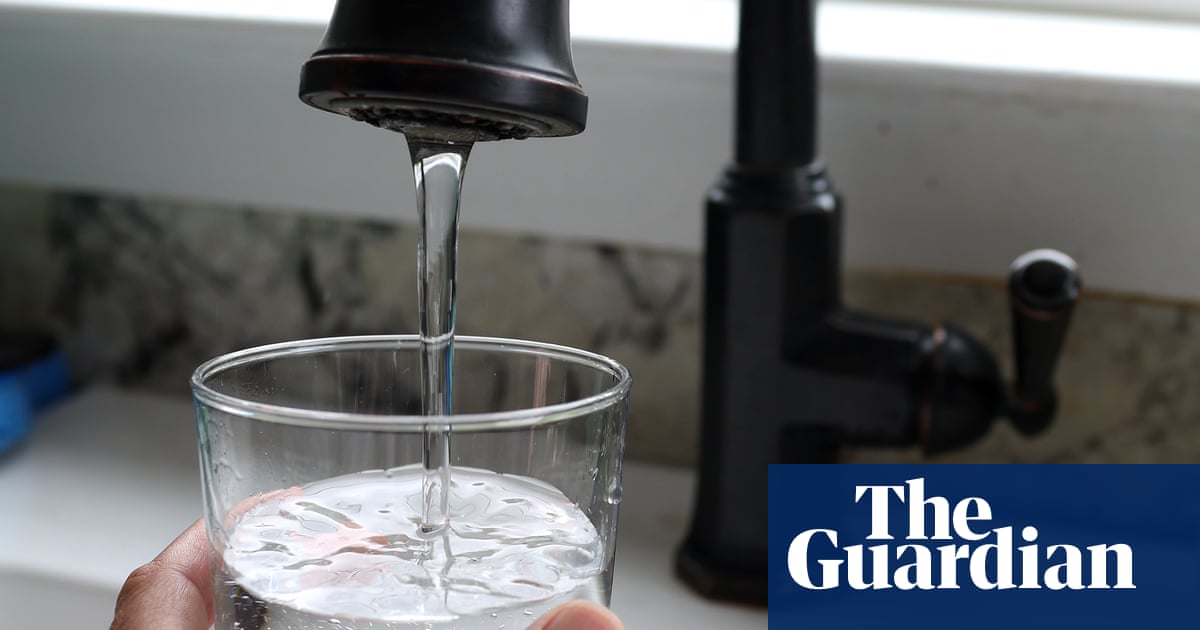Most of these comments are people recommending bottled water or various filtration methods, both of which could work in varying degrees. Let’s not miss the point that people who will be most impacted are low income and might struggle to pay their tap water bill. Bottled water and filters are a stretch for those folks. The true fix is demanding more of our politicians to hold polluters accountable and push for better treatment of the tap water.
I live in the Cape Fear area of North Carolina and we are dealing with this. Chemors, the maker of Teflon, has been dumping PFAS in our water.
My town recently built a reverse osmosis water treatment plant. It is the only way to get it out of the water. Traditional water filters don’t work.
Did they at least get Chemors to stop dumping the shit too??
3 companies were found liable for having knowingly dumped toxic PFAS into our drinking water supply. Chemours, Dupont, and Corteva. They admitted no wrong doing, but settled out of court for a total of 1.19 billion, half of which was paid by Chemours, the main contributor, and the other half paid by Dupont and Corteva. This happened in June 2023.
Annual Profits
Dupont: ~14 billion per year
Chemours: ~7 billion per year
Corteva: ~17 billion per year
PFAS in drinking water has been found to cause numerous health problems, including “altered metabolism, fertility, reduced fetal growth and increased risk of being overweight or obese, increased risk of some cancers, and reduced ability of the immune system to fight infections.”
Bottled water is the fucking problem. Don’t whinge about anything climate based if you recommend plastic. The disconnect on solving contaminated water with plastic water bottles s mind boggling.
If you don’t have a water source very close plastic beats glass very fast.
Glass is so much heavier that the additional fuel to transport it over 100km offsets whatever emissions plastic creates.
This is the classic “no good option” dilemma depending where you live.
In many parts of Europe you can buy the locally sourced water from glass bottles - but it doesn’t make much sense buying glass bottles for climate change reasons otherwise
I don’t know much about this but wouldn’t a water filter be better?
We have great municipal water so I have never used one, but it at least sounds better than buying bottled water.
Yeah using the local tap water and adding a water filter if necessary is the best option for sure
What are you even talking about? The moral “dilemma” here isn’t between water bottled in plastic vs. water bottled in glass; it’s between water bottled in plastic and water piped through the damn tap. Tap water is unambiguously superior and it’s not even close.
If that’s drinkable then definitely
Not sure if I’d trust a 20€ Amazon filter with US tap water in some regions
As long as the companies providing the water a) make more than enough profits and b) are not held accountable, why should they do anything about it?
Because it’s morally right? But I get your point and understand the question isn’t meant to be answered.
“Morally right” does neither rise the shareholders profits nor the managers bonus.
this guy capitalists
Know your enemy!
Municipal water supply is one of the few things left that’s almost universally provided by the government directly instead of being outsourced to corporations. “Morally right” should actually matter here!
Everyone for years - “Why do you waste money on bottled water” (the big 5 gallon kind on a dispenser)
Me - Uh, have you ever had tap water?Isn’t most bottled water just tap water packaged in landfill fodder?
Yep most people have no clue that your bottle water is tap water filter but as all the same chemicals in them.
If they didn’t the water turn green or brown in a month.
Grew up on well water you can’t keep it for months on end and if you don’t use the line for awhile there is a smell.
That’s… Not at all right. Pour that bottled water into your well and see what happens.
Putting purified water in a bottle seals it off from contamination. Your well doesn’t have that.
It’s like sterile and sealed medical equipment vs something left out on the table for weeks on end.
I’m no bottled water fanatic, but it’s not magical chemicals keeping the bottled water from growing bacteria.
Damn sure is it fucking tap water that been flitered. Worked 20 years in the water industry don’t talk to me like I don’t know.
So whatever in your tap water in your bottle water. No magic chemicals just good fashion chlorine same shit put in bleach.
Hell some small water departments actually put bleach in the water I know been there when they did it.
https://waterdefense.org/water/bottled/bottled-water-brands-without-chlorine/
The point is the water stays clear (i.e. does not turn brown within a month) not because of chemicals but because it’s been sterilized (and then put in a sealed bottle). If it sterilization didn’t work, distilled water would have some serious issues.
The water stays clean because it is free of bacteria (and also potentially free of the nutrients bacteria need to grow) … unlike well water which is often pulling from shallow wells which are not close to sterile.
Sparkletts has a filter option which iirc they call primo and a spring water option. I get the spring water, so unless they are flat out lying, no it’s not in my case.
You’re right. No one in the bottled water industry would lie. What possible motive would they have?
I understand that, but I can’t do anymore due diligence than I have done.
I’ve also had to switch water companies 3 or 4 times now because fucking nestle keeps buying the small local companies. Fuck nestle.
Good on you for avoiding Nestle, but you’d be way better off with refilling a good steel or glass bottle.
I do use reusable steel and glass bottles.
Awesome, buying bottled water is a ripoff and an environmental disaster.
I think spring water can technically count as tap water.
https://www.healthline.com/nutrition/spring-water-vs-purified-water#spring-water
Underground aquifers are definitely used as the tap water source in some areas.
The main difference between spring water and tap, is likely that your tap has fluoride and chlorine to A) help with dental health and B) keep the water safe if there’s some kind of contamination on its way to your home.
If you own your home or can install one… I highly recommend just installing a reverse osmosis system for your drinking water. It needs annual service, but it’s a heck of a lot easier and cheaper than buying all your drinking water in bottles.
I rent so I’m stuck with that I’ve got. As I’ve said, I can’t do anymore due diligence here.
I’ve also had to switch water companies 4 or 5 times now because nestle keeps buying up the little local companies. I also use stainless or glass bottles for drinking out of.
Nestle claims they still used the same spring as the last company (which had the best tasting water) but as soon as nestle took over it tasted exactly like the rest of the arrowhead shit. Plus the service went to hell. So I switched to sparkletts.
Okay. Just as a friendly option you possibly haven’t considered, I used ZeroWater for a while before I bought a home and could install a reverse osmosis system; it might be a good value for you, and it does a really good job of cleaning up tap.
I’ve tried multiple variations of those, and they all end up smelling/tasting horrible anyhow. Thanks though. What we are doing works well for us.
Yeah, no, you’re just paying to drink tap water and making a shitty company like Nestle rich in the process in addition to creating more waste.
Do yourself a favor and get a nice stainless steel or glass waterbottle along with a good filter or better yet, purifier. They won’t get rid of everything but they reduce a lot of stuff you don’t want to drink (like lead) and taste better than tap water.
What material are those bottles made out of by the way?
That water isn’t much better. But that’s why I fill my 5 gallon jugs with the distilled water (self distilled tap water).
Make sure you remineralize your distilled water or it will degrade your teeth over time.
Can you elaborate on this point? I installed a to system in my house this year, so I’m curious about that but.
Plenty of other sources for said minerals ;)
Better be distilling multiple times to get rid of PFAS.
It’s literally the most effective way to get rid of PFAS. I’m ok with over 99.x% PFAS free for water after just one cycle
I’m a fan of under sink filters. Dead simple to install and replace the filter. I never trusted those dispensers because many of them are just local tap water.
I doubt your house filter removes PFAS either.
Why? PFAS is pretty large, and is readily removed by activated carbon, particularly GAC (Granular Activated Carbon), Ion Exchange Resin, and Reverse Osmosis. Multistage RO filters are “Dead simple to install and replace”. Do you have any reason, or is doubting just a way of life for you? FWIW, I have RO filtration for my drinking and cooking water. You might want to consider it.
Reducing PFAS in Drinking Water with Treatment Technologies
https://www.epa.gov/sciencematters/reducing-pfas-drinking-water-treatment-technologiesCited in the article:
Data Summary of The Fifth Unregulated Contaminant Monitoring Rule
https://www.epa.gov/dwucmr/data-summary-fifth-unregulated-contaminant-monitoring-ruledeleted by creator
Got a big water pitcher/filter I keep in the fridge. Fill it maybe once a day. Now my water is filtered and cold. under sink is probably better quality filter, though.
Depends on the filters I’d think. A good pitcher filter can work great and there are probably under sink filters that aren’t that great. Doesn’t necessarily mean they’re better or worse. That said, there are some pretty nice under sink filtration systems.
It’s spring water from sparkletts. I made sure not to get just filtered tap water. Unless they are flat out lying about what is in the bottles (not saying it’s even a far stretch, but I can’t do any more due diligence)
Exactly. One thing I’ve learned from areas with unsafe drinking water is the beauty of stores dedicated to providing purified water (delivery an added bonus). Going back to the US and drinking “safe” tap water has always been pretty gross after that, even in houses with some filtration systems.
A home-based RO system would be nice, but I’ve always wondered if the ones people usually get (<$500) can compete with the quality of the commercial suppliers/stores that you typically see in other countries. Likewise for the small fill stations common on the outside of US grocery stores. Are all these systems truly of similar quality? I have a hard time trusting those tiny little under-sink setups and the unattended outdoor water fills.
I lived the majority of ky adult life with a roommate who kept a 100 gallon salt water coral aquarium for almost a decade. One of the most expensive, difficult, time demanding hobbies I’ve ever seen. He couldn’t afford to replace the 20 or so gallon that needed to be replaced every couple weeks to keep the salinity and other chemical levels stable, so we had one of those under the sink RO filters. It always tasted great unless he forgot to change the filters. I worked at a Starbucks for quite a while and they basically just have a larger version of that which is changed out whenever the sensors ping their maintenance hq. Water there tasted the same.
Plastic bottled water to me is one of the ultimate fuck yous to the planet’s ecosystem that most people could easily stop today. It’s telling that the consumable plastic market is primarily owned by the oil companies, hell it’s one of the many products that can be developed from the refinery process. Short answer is get a metal thermos or canteen and refill it with RO or some other filtered water, get one of those Brita pitchers if you can’t or won’t install an RO, and cut back on your plastic containers as much as you feasibly can.
My thoughts are more centered on true purity and safety, but it’s usually a good sign if it at least tastes better! As we learn more about water contamination, it seems like a well-designed and well-maintained RO system is a good idea for people who want to help protect their health.
Single-use plastic water bottles are basically a crime against humanity, especially when used frivolously (drinking bottles filled with tap water of the same quality that comes out of the faucet). But the reusable 5-gallon jugs are a different category, in my opinion. In many places, these large plastic containers are by far the most popular lifeline to safe drinking water. Of course I’d prefer metal or glass, but the logistical challenges and availability make them a problem.
Agree with most everything you said, except the Brita part… Those things are kind of a joke, lookup ZeroWater. IMO it’s the best RO alternative you can get (it tests better than RO too in terms of TDS … but it’s way more of a hassle and a few TDS aren’t really an issue).
Oh nice! Just checked out their site. Thanks for the tip.
I’m imagine it depends who the service company for the filling machine is. Our delivery is from sparkeletts, and I made sure to get the spring water, not the filtered water.
I agree. ”It depends” seems like the right answer to me.
Having access to clean, tested spring water seems ideal. You’re a lucky one!
But for areas dealing with contaminated water (whether it’s PFAS, lead pipes like Flint Michigan, or literal shit and commercial chemical dumping from areas with lackluster water treatment, mostly outside the US) then “it depends” seems the right answer.
What’s the RO membrane rating? Does the system have UV? Charcoal? Remineralization? And do they perform the necessary maintenance? Seems like these are the critical factors about the system and might be found in someone’s home, might be at the stores, but it depends!












